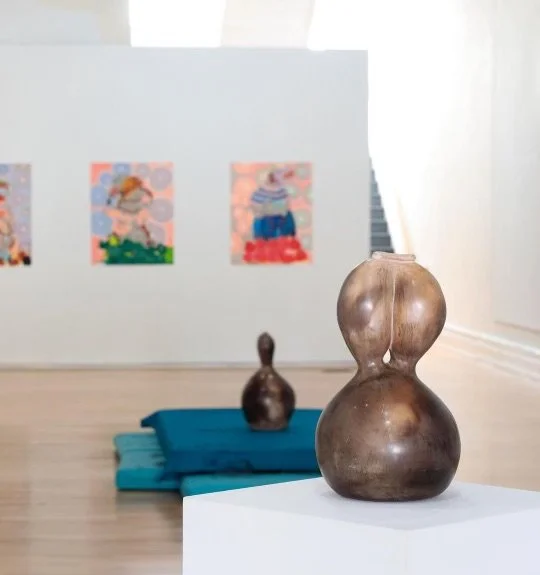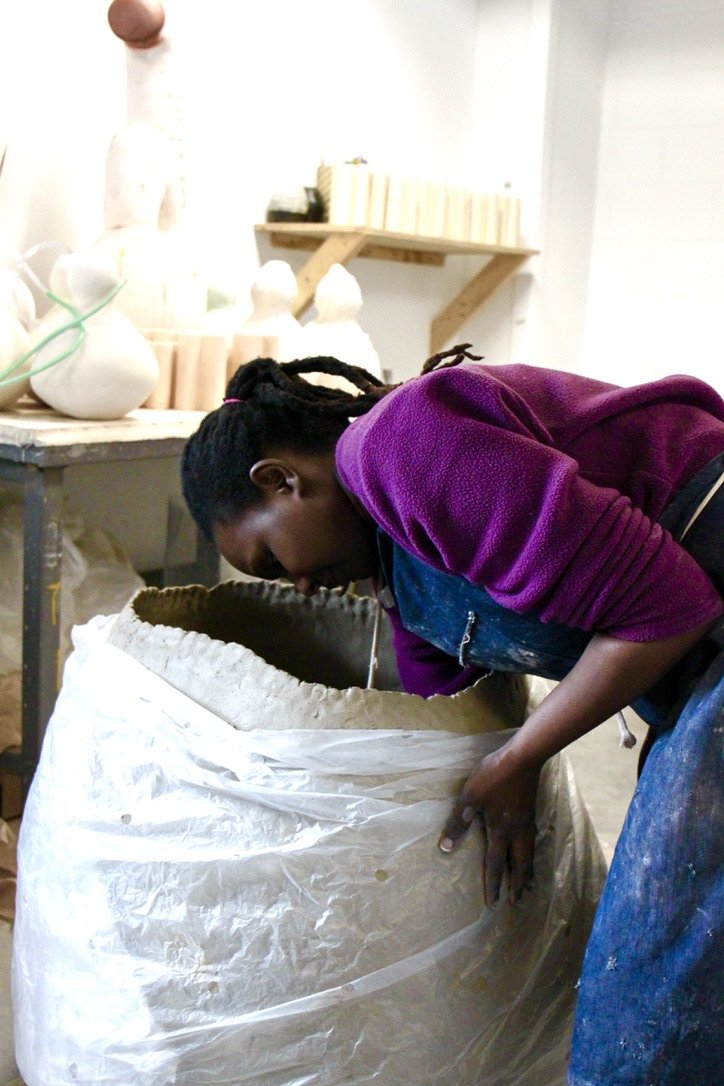Visiting Artist Workshop: Smoke Firing with Nyasha Chigama
Nyasha Chigama is back for a two part Smoke Firing Workshop! We asked Nyasha about this integral part of her process and what students can expect to learn during the workshop. Learn more below.
HAND / THROWN: When did you start utilizing the smoke-firing method for your pieces?
NYASHA CHIGAMA: When I was doing my internship at Isibaya Ceramics with Madhodha Fani and Nich Sithole in 2014-2015 in South Africa. I had encountered some wares that had the same effect in my grandmother's kitchen when growing up but I had no idea that for such an effect to be achieved there was a whole process behind it. Now I innovate my forms by combining all the different learning experiences and introduce the smoke firing technique when the space and resources permit.
HT: How did you learn to smoke fire?
NC: Once I started to work at Isibaya Ceramics, I was fascinated by the work that was produced by Madhodha Fani and so through my interest in the process as well as the aesthetic appeal of the pieces I learned by asking questions and seeing him do the process from start to finish.
HT: Tell us about the burnishing technique used prior to firing.
NC: Once the pottery piece is firm enough to withstand pressure, the burnishing starts until it is bone-dry, the piece is burnished with a smooth stone/metal anything comfortable to hold in your hand, and has a flat surface to make the vessel shiny. Oil can be rubbed once it is bone dry and this oil-rubbing process is repeated multiple times before bisque firing.
HT: Why is smoke firing so important to your work and practice?
NC: It is important to my work and practice because it has been a historical process associated with ancient pottery and also because I see us humans as going through the same process of being stained by different situations and every time we come out different and unique.
HT: What will people learn in your workshop?
NC: People will learn to develop pottery techniques historically used in ancient African times as well as question their role in contemporary culture. Explore the ways African pottery engages an audience as a means of artistic communication as well as getting an understanding of African pottery and designs used for aesthetic and utilitarian purposes.
To see more of Nyasha’s work, follow her on Instagram.
More details about her workshop below!



